Archive for February, 2018
-
“The Buffett Effect”
Eddy Elfenbein, February 6th, 2018 at 1:34 amFrom the WSJ:
One underappreciated factor adding to the selling in global markets is the Federal Reserve’s action against Wells Fargo last week, which helped erase $29 billion from its market value.
With Warren Buffett controlling 9.4% of the bank through Berkshire Hathaway, the fact that retail investors aren’t safe from a bear market is probably dawning, says Eddy Elfenbein, a Washington-based portfolio manager and editor of the blog Crossing Wall Street.
“Look, if Grandpa Capitalist is not safe here then where are we?” he said retail investors seem to be asking themselves.
Mr. Elfenbein had a doctor’s appointment on Monday afternoon, but skipped it and remained glued to his Twitter feed and laptop once the market started dropping. The only time he could pull himself away from his computer was later in the evening when he grabbed a sandwich, he said.
-
CWS Market Review – February 5, 2018
Eddy Elfenbein, February 5th, 2018 at 10:47 pmWell, today was certainly an eventful day on Wall Street. That’s why I wanted to send you an update to fill you in on today’s action.
Let’s start with the important news—there’s no reason to make any change to our strategy. There’s no reason to get scared and sell. Our Buy List is just fine. In fact, we outperformed the market by a good margin today (meaning, we were down less than everybody else).
One of our Buy List stocks, Church & Dwight (CHD), had a good earnings report this morning, plus they raised their dividend. CHD was one of only two stocks in the entire S&P 500 that closed higher today. Seventeen of our 25 stocks beat the S&P 500 today. When folks get scared, they seek out quality and that’s what we have.
Now let’s look at some of today’s damage. It ain’t pretty. The Dow Jones Industrial Average plunged 1,175 points—its greatest single-day point loss in history.
It was a slow build. By 2 pm, the Dow had lost about 330 points, which was making for a bad day, but it was nothing too serious. After that, things got very rough. Over the next hour, the Dow shed an additional 470 points, but that was only the beginning. In the next 10 minutes, the Dow dropped another 700 points.
At its lowest, the Dow was down 1,597.08 points. The previous record point loss was 777 points, so we were more than twice that (I’m talking about points, not percent). The NYSE employs a “circuit breaker” where trading shuts down for 15 minutes if the Dow loses 7%. That would have been about 1,800 points today, so we didn’t hit it.
By the closing bell, the Dow had lost 1,175.21 for a loss of 4.60%. That was more than the entire Dow was worth in 1984. The S&P 500 lost 113.19, also its greatest point loss ever, for a drop of 4.10%. (Note the unusually wide spread between the two indexes. That was due to a bad day for Boeing. Personally, I prefer the S&P 500.) The S&P 500 also easily dropped below its 50-day moving average. The index hasn’t traded below its 50-DMA since August.
I’ve been talking about points, but was this the worst day in percentage terms? Please—not even close! In the last decade, this was the S&P 500’s 25th worst day. To be precise, today wasn’t the weird thing. The truly weird thing was the ultra-low-volatility rally that preceded today. Today isn’t unprecedented. The couple of months leading up to today were.
In the last several newsletters, I’ve passed along several stats of us going so many days without a 1% drop or consecutive days closing within 3% or 5% of an all-time high. All those stats reflected one thing: our low-vol rally. Now, normal market behavior is returning. The VIX rose 115% today. That’s something you don’t see every day!
Let’s add some context. Even with today’s loss, the S&P 500 is still up 7% since Labor Day. For the year, the S&P 500 is down a little less than 1%.
The natural reaction is to ask, “what happened today?” It’s frustrating to say this, but this is what markets do. Every so often, things just freak the hell out. We think, X happened, therefore, what caused X? Sometimes, X just is.
There are a few items I can point to, but who knows how large a role they played. For example, this was Jay Powell’s first day as Fed chair. Greenspan started on the job a few weeks before the 1987 crash. It’s not rational but markets aren’t wild about change.
I was particularly struck by some activity in the Fed funds futures market. The futures started to signal that a fourth rate hike could be possible this year. That’s surprising. I believe the odds got up to about 26%, so possible but not probable. Either way, that’s unexpected and that could have helped freak the market out. The very strong ISM Non-Manufacturing report this morning may have given the rate hawks more confidence.
Our Buy List was down today but by a lot less than the S&P 500. For the day, our Buy List fell 3.44% which means we outperformed by 66 basis points. Church & Dwight (CHD) had a very good earnings report, plus they raised their dividend. CHD was one of only two stocks in the S&P 500 that closed higher today.
There’s not much more to say right now. Expect more volatility. We have a bunch more earnings reports coming this week. Cerner (CERN) and Becton, Dickinson (BDX) report tomorrow. I’ll have more in this week’s newsletter. I usually open with a quote, but this time I’ll close with one of my favorites from Peter Lynch: “The real key to making money in stocks is not to get scared out of them.”
– Eddy
-
Earnings Does Not Equal the Market
Eddy Elfenbein, February 5th, 2018 at 2:17 pmSome interesting stats via Bloomberg:
“Based on the past 90 years, the S&P 500 is actually slightly more likely to have a down year when EPS grows by over 10 percent than when it grows by less than 10 percent,” write a team led by senior equity and quantitative strategist Dan Suzuki. “In fact, of the 29 down years for the S&P 500, EPS growth was positive almost 70 percent of the time and up double-digits close to 50 percent of the time.”
This really isn’t much of a paradox. The market moves ahead of time. By the time the thing happens, it’s usually too late.
-
“Objects in the Rear View Mirror May Appear Closer Than They Are”
Eddy Elfenbein, February 5th, 2018 at 1:35 pmHere’s a minute-by-minute chart of the S&P 500 for the last two weeks.
The vertical axis makes this move seem larger than it truly is. While the market is down, it’s not down by very much. The difference is that volatility has been so low that any break seems like a big deal.
The S&P 500 barely dipped below its 50-day moving average. We haven’t closed below the 50-DMA since August.
We lost a lot at the open, then rallied, then plunged even lower. The Dow is currently down 437 points and it could dip below 25,000. The index is currently at 25,037.88.
Bitcoin has been as low as 6,930.13 today, and I’m pretty sure it fell below the Nasdaq Composite.
Within the market, Energy and Financials stocks are down the most. Utilities and Consumer Discretionaries are down the least. Interestingly, Tech isn’t doing that poorly.
The S&P 500 Value Index is down 1.99% while the S&P 500 Growth is down 1.24%. I’m guessing the Financials are a large part of that story.
-
Church & Dwight Earned 52 Cents per Share
Eddy Elfenbein, February 5th, 2018 at 8:47 amChurch & Dwight (CHD) reported Q4 earnings today of 52 cents per share. The company had been expecting 50 cents per share. Organic sales rose 3.4% which was above CHD’s outlook of 2.5%. For the whole year, EPS rose 10% to $1.94 per share which also exceeded their outlook.
Matthew Farrell, Chief Executive Officer, commented, “Q4 organic sales growth exceeded our outlook in all three segments. Our Q4 category growth improved sequentially and year over year. The Consumer Domestic business had strong volume growth in Q4 while the promotional environment improved. In the domestic business, 7 out of 11 power brands exceeded category growth in 2017. The investments in our international business, particularly export, are paying off as evidenced by consistent organic growth which we expect to continue. In 2017, we made a great acquisition with Waterpik. Finally, we concluded the year with strong growth in our animal productivity business. We are hitting on all cylinders.”
Church & Dwight also raised their quarterly dividend by 14% from 19 cents to 21.75 cents per share. That makes the annual dividend 87 cents per share. Church & Dwight has paid a regular consecutive quarterly dividend for 117 years.
For 2018, CHD expects EPS to range between $2.24 and $2.28. That’s growth of 16 to 18%. Wall Street had been expecting $2.14 per share.
Mr. Farrell continued, “We expect sales growth of approximately 8% and organic sales growth of approximately 3%. We expect gross margin to be flat as productivity programs will offset rising commodity costs and product enhancements. While recent acquisitions require lower levels of marketing, we expect to increase our spending to sustain marketing at approximately 12% of sales. SG&A will increase as a percentage of sales largely due to recent acquisitions which have intangible amortization expenses, integration costs and higher levels of SG&A. The new tax law is expected to reduce our tax burden by lowering our effective tax rate to approximately 24-25% compared to 32% (excluding tax reform) for 2017. Our estimate is based on our current understanding of the new Tax Act which may change as regulations are finalized.
For Q1, Church & Dwight expects earnings of 61 cents per share, on organic sales growth of 2%. Wall Street had been expecting 56 cents per share for Q1.
Update: Church & Dwight closed higher by 2.35% today. It only one of two stocks in the entire S&P 500 that rose today.
-
Morning News: February 5, 2018
Eddy Elfenbein, February 5th, 2018 at 7:04 amWhy the Cryptocurrency World Is Watching South Korea
China Enlists Its ‘Great Firewall’ to Block Bitcoin Websites
Bitcoin Drops Below $8,000 After Another Bank Ban on Credit-Card Buying Hits
Big U.S. Trade Gap Expected, and European Stimulus Plan at Issue
Dear Jay: High-Powered Advice for the Incoming Fed Chairman
Broadcom Plans to Boost Qualcomm Bid to $120 Billion
Tesla Is Turning 50,000 Homes in South Australia Into a Giant Battery
Nissan to Invest $9 Billion in China in Race for EV Dominance
Wells Fargo Shares Plunge After Fed’s ‘Consent Order’ That Caps Growth
DC Comics Joins Forces With Young Adult Authors
Early Facebook and Google Employees Form Coalition to Fight What They Built
Jury to Hear Opening Statements in Waymo-Uber Trial Over Autonomous Car Secrets
Get-Out-of-Jail Victory for Samsung’s Lee Hits Reform Campaign
Jeff Carter: The Hard Thing About Small Funds
Michael Batnick: These Are the Goods
Be sure to follow me on Twitter.
-
“The Easy Money Has Already Been Made”
Eddy Elfenbein, February 4th, 2018 at 3:24 pmCheck out this chart. Does it look like a good time to buy?
It’s the S&P 500 from 1932 to the middle of 1956. By looking at the chart, a lot of investors would be scared of the pattern. What would you have thought?
“It’s already gone up so much. How much higher can it go?”
“The easy money has already been made.”
“I’ll wait until things get clearer.”
“I’l wait for a pullback.”
Now here’s an S&P 500 chart through the next 25 years. The first chart is the blue rectangle.
I’m really understating the effect because the chart ends near where the bull market takes off.
-
The Stock Market’s Size Distribution
Eddy Elfenbein, February 4th, 2018 at 1:37 pmOne of the key aspects to investing that I stress to investors is how skewed things are on Wall Street. By this, I mean there’s a very small group of very, very large stocks. Outside that, there are tons and tons of tiny stocks.
I’m not saying it’s right or wrong, I’m merely pointing out this fact. It’s not hard to mimic the S&P 500 closely by using just a few stocks. Conversely, you can also own a large group that shows little connection to the index.
Check out this chart. The x-axis is companies in the S&P 500. The y-axis is the cumulative market cap of the S&P 500’s market value.
The 10 largest companies in the S&P 500 make up nearly 22% of its value. The top 50 stocks make up nearly half while the other 450 stocks make up the other half. The smallest 210 stocks comprise just 10% of the index which is smaller than the weight of the four largest stocks.
Bear in mind that this is just the S&P 500, so these are already large companies. Yet even within that universe, the big boys dominate.
Below is the chart again but on a log scale for both sides. I believe the line needs to be straight to qualify as a Paretio Distribution. (Please correct me if I’m wrong on that!)
-
WALL STREET ROCKED AS DOW CRASHES 666 POINTS IN MASSIVE INVESTOR BLOODBATH!!!!!
Eddy Elfenbein, February 2nd, 2018 at 4:45 pm -
Wabtec’s Preliminary Results Disappoint
Eddy Elfenbein, February 2nd, 2018 at 10:01 amWabtec (WAB) won’t report its earnings until February 20, but the company released preliminary Q4 results today. Looking past all the adjustments due to tax reform, WAB expects Q4 earnings of 90 cents per share which is a five-cent miss.
Here are some details.
*Revenues of about $1.1 billion.
*GAAP earnings per diluted share of about 55 cents.
*GAAP earnings are expected to include the following impact from the U.S. tax reform bill that was enacted in December 2017: expenses of about $55 million, or about 57 cents per diluted share, for the repatriation of earnings; and a benefit of about $52 million, or about 53 cents per diluted share, from a reduction in deferred tax liabilities. Therefore, the net impact of U.S. tax reform in the fourth quarter is expected to be an expense of about $3 million, or about 4 cents per diluted share.
*GAAP earnings are also expected to include: contract adjustments of about $24 million, or about 18 cents per diluted share, for higher-than-expected costs to complete certain existing contracts; and expenses of about $18 million, or about 13 cents per diluted share, for restructuring and integration actions.
*Excluding the impact of tax reform, the contract adjustments, and the restructuring and integration actions, fourth quarter adjusted earnings per diluted share are expected to be about 90 cents.
*Cash from operations for the quarter was about $145 million, and the company had a year-end net debt balance of about $1.6 billion.
*At year-end, the company had a record, multi-year backlog of about $4.6 billion, 2 percent higher than at the end of the third quarter.
Raymond T. Betler, Wabtec’s president and chief executive officer, said: “2017 was a year of transition and positioning the company for the future. We made excellent progress on integrating the Faiveley acquisition, implemented common processes that we believe will improve our project execution and performance, improved our cash flow generation each quarter, and continued to invest in our growth strategies. We are finalizing our financial plan for 2018 and expect to generate growth in revenues, adjusted earnings per diluted share and cash flow from operations.”
The shares are down about 5% this morning.
-
-
Archives
- April 2025
- March 2025
- February 2025
- January 2025
- December 2024
- November 2024
- October 2024
- September 2024
- August 2024
- July 2024
- June 2024
- May 2024
- April 2024
- March 2024
- February 2024
- January 2024
- December 2023
- November 2023
- October 2023
- September 2023
- August 2023
- July 2023
- June 2023
- May 2023
- April 2023
- March 2023
- February 2023
- January 2023
- December 2022
- November 2022
- October 2022
- September 2022
- August 2022
- July 2022
- June 2022
- May 2022
- April 2022
- March 2022
- February 2022
- January 2022
- December 2021
- November 2021
- October 2021
- September 2021
- August 2021
- July 2021
- June 2021
- May 2021
- April 2021
- March 2021
- February 2021
- January 2021
- December 2020
- November 2020
- October 2020
- September 2020
- August 2020
- July 2020
- June 2020
- May 2020
- April 2020
- March 2020
- February 2020
- January 2020
- December 2019
- November 2019
- October 2019
- September 2019
- August 2019
- July 2019
- June 2019
- May 2019
- April 2019
- March 2019
- February 2019
- January 2019
- December 2018
- November 2018
- October 2018
- September 2018
- August 2018
- July 2018
- June 2018
- May 2018
- April 2018
- March 2018
- February 2018
- January 2018
- December 2017
- November 2017
- October 2017
- September 2017
- August 2017
- July 2017
- June 2017
- May 2017
- April 2017
- March 2017
- February 2017
- January 2017
- December 2016
- November 2016
- October 2016
- September 2016
- August 2016
- July 2016
- June 2016
- May 2016
- April 2016
- March 2016
- February 2016
- January 2016
- December 2015
- November 2015
- October 2015
- September 2015
- August 2015
- July 2015
- June 2015
- May 2015
- April 2015
- March 2015
- February 2015
- January 2015
- December 2014
- November 2014
- October 2014
- September 2014
- August 2014
- July 2014
- June 2014
- May 2014
- April 2014
- March 2014
- February 2014
- January 2014
- December 2013
- November 2013
- October 2013
- September 2013
- August 2013
- July 2013
- June 2013
- May 2013
- April 2013
- March 2013
- February 2013
- January 2013
- December 2012
- November 2012
- October 2012
- September 2012
- August 2012
- July 2012
- June 2012
- May 2012
- April 2012
- March 2012
- February 2012
- January 2012
- December 2011
- November 2011
- October 2011
- September 2011
- August 2011
- July 2011
- June 2011
- May 2011
- April 2011
- March 2011
- February 2011
- January 2011
- December 2010
- November 2010
- October 2010
- September 2010
- August 2010
- July 2010
- June 2010
- May 2010
- April 2010
- March 2010
- February 2010
- January 2010
- December 2009
- November 2009
- October 2009
- September 2009
- August 2009
- July 2009
- June 2009
- May 2009
- April 2009
- March 2009
- February 2009
- January 2009
- December 2008
- November 2008
- October 2008
- September 2008
- August 2008
- July 2008
- June 2008
- May 2008
- April 2008
- March 2008
- February 2008
- January 2008
- December 2007
- November 2007
- October 2007
- September 2007
- August 2007
- July 2007
- June 2007
- May 2007
- April 2007
- March 2007
- February 2007
- January 2007
- December 2006
- November 2006
- October 2006
- September 2006
- August 2006
- July 2006
- June 2006
- May 2006
- April 2006
- March 2006
- February 2006
- January 2006
- December 2005
- November 2005
- October 2005
- September 2005
- August 2005
- July 2005
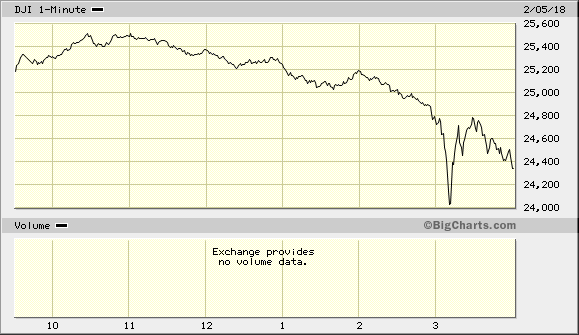
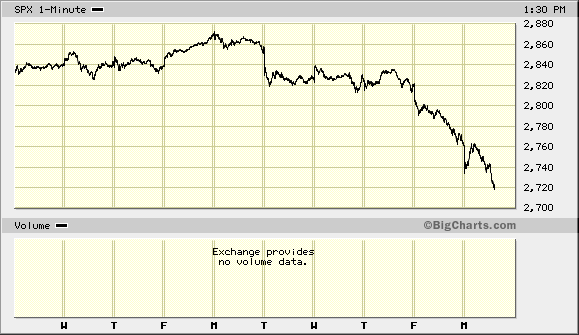
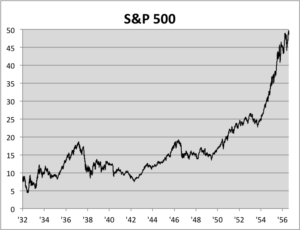

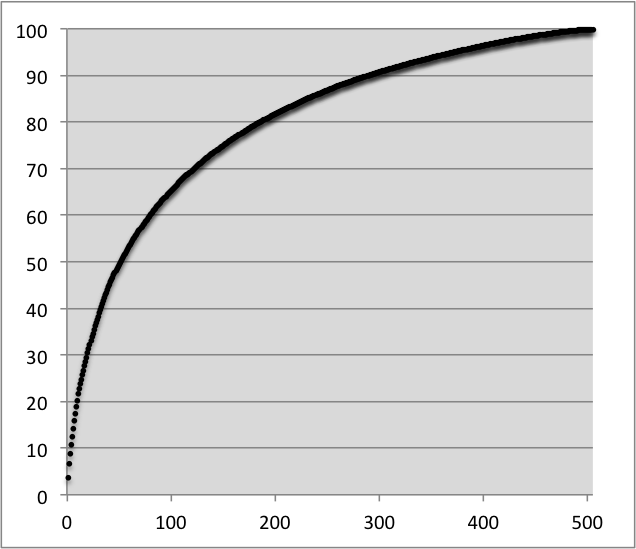

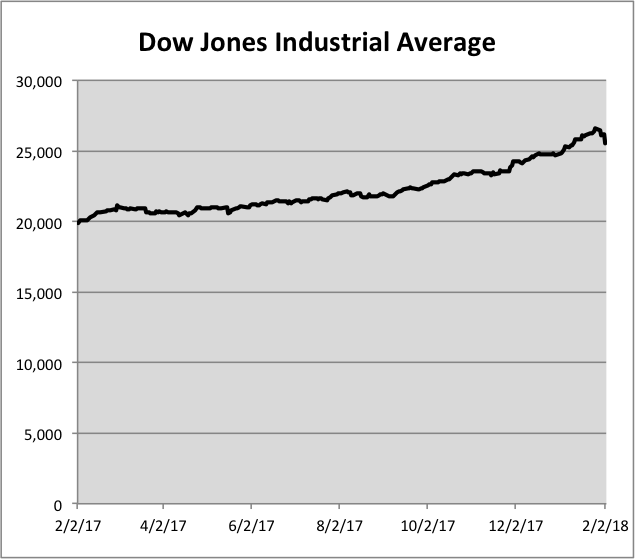
 Eddy Elfenbein is a Washington, DC-based speaker, portfolio manager and editor of the blog Crossing Wall Street. His
Eddy Elfenbein is a Washington, DC-based speaker, portfolio manager and editor of the blog Crossing Wall Street. His